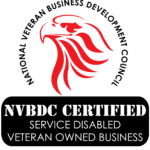Confined spaces are an integral part of many industries, from construction to manufacturing. They come in various forms and sizes, but they all share a common characteristic: limited or restricted means for entry or exit and are not designed for continuous occupancy. Despite their prevalence, working in confined spaces can be extremely hazardous if safety measures are not strictly adhered to. In this article, we will delve into what classifies as a confined space, the specific hazards associated with them, and the best practices for mitigating these risks.
Defining Confined Spaces
A confined space, as defined by OSHA (Occupational Safety and Health Administration) and similar regulatory bodies worldwide, is an area with limited means of entry or exit and is not designed for continuous human occupancy. This definition encompasses a wide range of work environments, including but not limited to:
- Tunnels: Underground passages with restricted access.
- Manholes: Access points to underground utility systems, often cramped and challenging to navigate.
- Pipelines: Enclosed conduits for transporting fluids or gases.
- Tanks and Vessels: Containers for storing or transporting liquids or gases.
- Silos and Hoppers: Storage containers for bulk materials.
- Vaults and Pits: Subterranean chambers used for various purposes.
- Equipment Housings: Enclosures for machinery or equipment maintenance.
Identifying Specific Hazards
Confined spaces are inherently risky due to their limited entry and exit points, as well as their often hazardous environments. The specific hazards that workers may encounter in these spaces include:
- Lack of Oxygen: Many confined spaces have insufficient oxygen levels, making it impossible to breathe. This can lead to asphyxiation, even in a matter of minutes.
- Toxic Atmospheres: Contaminants such as gases, vapors, or particulates can accumulate, posing a risk to anyone inside the confined space.
- Temperature Extremes: Some confined spaces can have extreme temperatures, which can cause thermal stress, heatstroke, or hypothermia.
- Fire and Explosions: The presence of flammable materials, electrical equipment, or ignition sources can lead to fires and explosions.
- Uncontrolled Energy Release: The confined space may contain machinery or equipment that could start unexpectedly, causing harm to workers inside.
- Collapse of Solids or Liquids: The structural integrity of the confined space may be compromised, leading to collapses or inundation by liquids.
Best Practices for Mitigating Confined Space Hazards
To ensure the safety of workers in confined spaces, it is essential to follow a set of best practices designed to mitigate the identified hazards:
- Monitoring: Before entering the confined space and throughout the work, it’s crucial to continually monitor the atmosphere for oxygen levels, toxicity, and other potential hazards.
- Hazard Removal: Remove or control as many hazards as possible before commencing work. For example, ensure that equipment is shut down and locked out, and that all energy sources are disconnected.
- Energy Control: Implement lockout/tagout procedures to prevent the inadvertent release of energy sources that could harm workers.
- Ventilation: If the confined space contains a hazardous atmosphere, use mechanical ventilation systems to ensure a safe working environment.
- Engulfment Hazard Removal: Remove or protect against potential engulfment hazards, such as loose materials or liquids that could submerge a worker.
- Rescue Personnel: Have trained rescue personnel on-site or on standby to respond in case of emergencies.
- Hazard-Specific Plans: For hazards that must be taken into the confined space (e.g., welding equipment), develop specific safety plans and protective measures.
- Mechanical Means of Rescue: Equip workers with harnesses and cables to facilitate their rescue in case they become incapacitated.
- Emergency Preparation: Prepare for the worst-case scenario by having an emergency response plan in place, which includes communication, equipment, and procedures for evacuation and rescue.
Working in confined spaces is a necessary but potentially dangerous aspect of various industries. By understanding the hazards associated with these spaces and implementing best practices for mitigating risks, employers and employees can ensure the safety of those working in confined environments. It is imperative to stay vigilant, prioritize safety, and be prepared for any contingencies when working in confined spaces to minimize the likelihood of accidents and injuries.



